The #1 Cause of Your Skin Care Woes: Inflammation
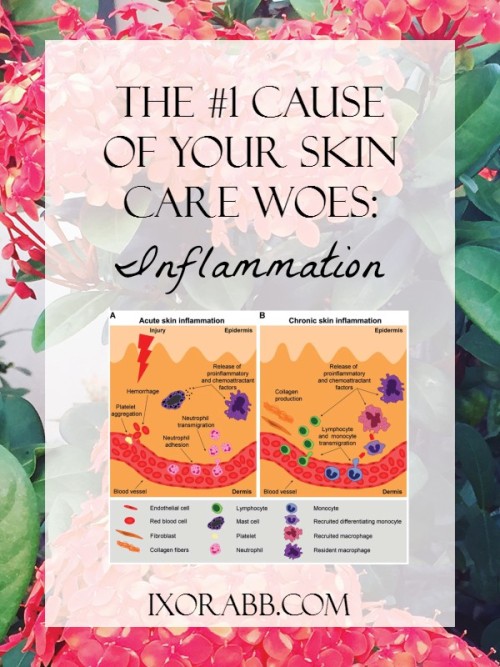
You know when you wake up in the morning and go wash your face and the first thing you see is this intrusive pimple sitting on your forehead or nose? You just KNOW your day is bout to start off on the wrong foot.
Pimples, eczema, rosacea, lost of collagen, all things that are caused by inflammation.
Now, before we get to the ugly stuff, let’s talk about the GOOD thing that inflammation does.
There are two types of inflammation, acute inflammation and chronic inflammation. Acute inflammation is the GOOD one. This inflammation is basically your body’s National Guard. It’s called upon when the body is under attack. Chemicals are sent from the body’s white blood cells to the area that is at risk and once it has fought off whatever that is attacking, it retreats until it is called again. If your body is experiencing function loss, redness, swelling, heat or pain, all of these are signs that inflammation is occurring within your body.
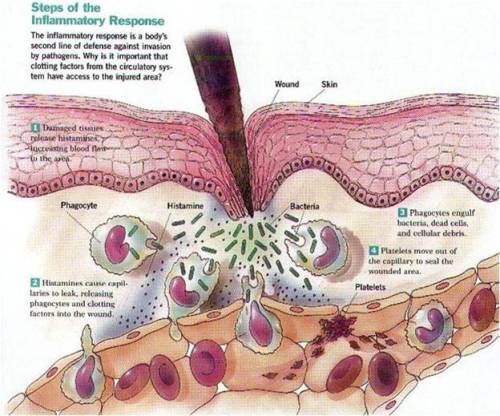
See? Inflammation isn’t all bad right? WRONG.
Now here is where inflammation becomes All Lives Matter. Chronic Inflammation can be triggered by stress, bad diet and environmental factors.
The stress hormone called cortisol elevates during stress and while it does its job properly for short periods to handle stress, if you’re constantly stressed, that hormone can go haywire and cause inflammation. That inflammation can show up as acne.
You digestive tract has to be balanced with good bacteria. Some of the things that can throw off the balance is stress, bad diet and even antibiotics. The reaction from your off balanced digestive tract will show up in your skin. It can look like everything from acne breakouts, rosacea, and visible signs of aging like wrinkles and sagging.
All these instances are why finding ways to reduce your stress levels, getting healthy amounts of sleep every night, eating right and exercise can help reverse and/or prevent chronic inflammation.
Now while you’re treating the inside of your body, here comes the other issue. OUTSIDE inflammation triggers.
The biggest cause of skin inflammation externally is the sun. <~~ Click to tweet
Ultra violet rays generate molecules called free radicals, which cause inflammation. This is why it is SO important to wear sun screen. Inflammation due to the sun can cause the collagen in your skin to break down faster than normal which causes your skin to look old way earlier than normal.
I say all of this to say, taking care of your skin is both an internal job as well as external. Merely using products won’t help if you’re not taking care of it internally, and eating and sleeping right won’t help if you don’t properly moisturize, exfoliate and protect yourself from the sun’s rays. Your skin is the biggest organ on your body. Protect it because you only get ONE!
Common Causes & Triggers of Eczema in Infants & Children
Eczema does not appear or act the same way in adults as it does in children. Eczema usually appears anywhere from the first six months to five years of their life. Out of the 7 different types of eczema, atopic dermatitis (AD) is the most prevalent one in children. It is a chronic disorder that starts with the immune system.
Although AD is the most prevalent, it is most important to find out what type of eczema your child has so that you can treat it treat it the right way. There is currently no cure for eczema and the exact cause of it is also a mystery. Infants and toddlers normally develop the disorder from a combination of their genes and environmental factors. Something outside the body can trigger your immune system causing your cells to go into overdrive and causes your skin to flare up to form rashes, redness and itching. Another common factor that have been known to contribute to eczema, are babies that come from families that have a history of AD, asthma and hay fever. So if your family has a history of any of those 3, children of susceptible of picking up any of the three.
The appearance of eczema appears like:
First six months - Usually appears on the face, cheeks, chin, forehead and scalp. It can also spread other areas, but not necessarily the diaper area because moisture protects it. The baby’s skin tends to look red or weepy at this time as well.
Six to 12 months - Usually appears on their elbows and knees, which are places that are easy to scratch and where babies crawl.
Two to Five Years Old - Usually appears often in the creases of elbows and knees and on their wrists, ankles and hands. It can also appear around their mouths and eyelids. Something called lichenification happens to your toddler’s skin where it looks dry and scaly and becomes thick with deeper lines around this time as well.
Five Years and Up - Usually appears in the folds of the elbows and/or knees. Other times it can appear on their hands. If you see redness and itchy patches behind your child’s ears, feet or scalp it can be a sign of AD OR seborrheic dermatitis which can exist with eczema. Confirming with your doctor which one it is helps in seeking the proper treatment.
Baby Triggers:
Dry Skin - can be worse during the winter when the air is dry.
Irritants - saliva from drooling can cause irritation on your baby’s cheeks, chin and neck. Babies can also be triggered by allergens from pets or dust mites, or sensitivities to fabrics, cigarette smoke or chemicals we use on our bodies like perfume, shampoo, laundry detergent, etc.
Heat & Sweating - Both can make the itch of infant eczema worse.
Infection - Particularly prone to skin infections. This is in part due to the breaks in the skin from very dry, split skin and from scratching the itchy areas.
Diet - dairy, gluten, eggs, soy, peanuts, tree nuts nightshade vegetables (family of vegetales that includes all varieties of peppers and their spices like paprika and chilli), and acidic foods. Trying elimination diet with these food groups can sometimes give an indicator if a child’s diet is causing their eczema flareups. Seek a physician help with this as well to ensure the child is eating properly.
In the next post of this eczema series, we will discuss eczema in adults. Stay tuned…
3 Reasons Why Goat Milk Based Products Should Be A Staple In Your Household This Winter

Goat milk (GM) is rich in essential fatty acids and triglycerides. Because of its high fat molecule content, it reduces skin inflammation. The cream in GM is a rich moisturizer that soothes dry and damaged skin. The pH in these fatty acids are very similar to humans and the protein strands of GM are shorter than other types of milk so it tends to absorb into your skin easier and it is less irritating. It also contains wonderful skin minerals like selenium and is loaded with vitamin A which is very important for your skin. Goat milk also contains lactic acid, which is an alpha hydroxyl acid (AHA). This is a chemical exfoliant that sloughs off dead skin cells and helps to hydrate and brighten the skin. Because of that lactic acid, it is said to delay signs of skin aging and that acid actually works with the skin instead of breaking it down and aging it further.
Goat Milk in Soaps
In the winter months, the best type of soap to use would be goat milk based soaps. You want to retain as much moisture as possible. Because you need to exfoliate more often in the winter time, using a goat milk based soap will kill two birds with one stone. With its naturally producing lactic acid, every shower will consist of your skin being chemically exfoliated which can help reduce many skin conditions.
Goat Milk Soaps:
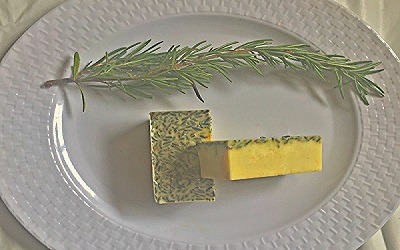
Lavender Lemon Goat’s Milk Soap,
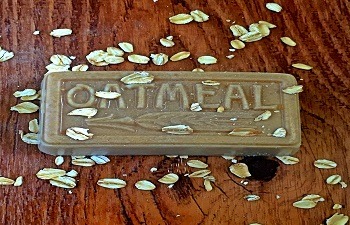
Goat Milk in Lotion
Goat Milk lotion isn’t greasy like other lotions. It is very soft and silk and feels like it’s coating your skin. This type of lotion is packed with high amounts of protein, fat, iron, vitamin A, B6, B12, C, D, E and more. They all play a part in slowing down the aging process while helping your skin to rebuild and adds elasticity as it assists in retaining moisture. GM has anti-bacterial properties that delay the growth of microbial organisms that can cause the spread of acne (face and body).
Goat Milk Lotion:
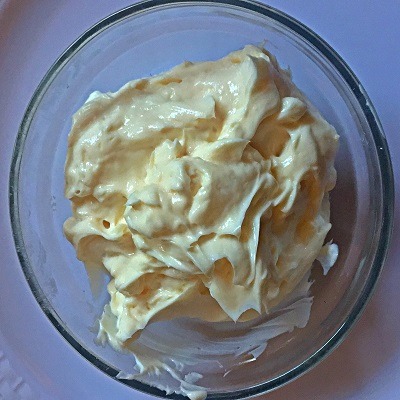
Goat Milk Baths/Bath Bombs
Enhancing your bath sessions with some goat milk in the winter time is just what your body needs for a great boost of moisture. The capric-caprylic triglycerides in goat milk forms a barrier on the skin to help prevent a loss of moisture. It’s the only milk that contains this. Soaking in a milk bath or using a goat milk bath bomb and applying a goat milk lotion is a sure fire way to lock in moisture. A GM bath/bath bomb also soothes irritated skin due to the casein, amino acids, lactic acid and array of vitamins that work together.
Goat Milk Baths – Canus Caprina Foaming Milk Bath*
Goat Milk Bath Bomb - Pumpkin Pie Bath Bomb, Pumpkin Spice Bath Bomb
Affiliate link*
Why Porosity, Width, Density & pH Should Be On Your Need-to-Know List For Proper Hair Care
When you decide to rock your hair the way it grows out of your head and start looking for products that will complement your beautiful tresses, you often go through TONS of products before you figure out what works. Most times, the reasons for that is because you aren’t taught what you SHOULD be looking for when it comes to your hair. The most you might know is your hair texture (4a, b, etc).
You look at the products and they talk about dry or brittle hair, or moisture and protein but the average product doesn’t discuss porosity or density and definitely not width of strands. The average woman (or man) doesn’t know their hair pH or how much that affects how their hair responds to products and that’s why I’m here.
Let’s Start with Hair Width.

Hair width is the thickness of each individual strand of hair. Fine width has a very small circumference and is very delicate and easy to damage. Medium width consists of strands that are strong and elastic, and neither too thin nor too thick. Coarse hair are very wide in circumference, making them the strongest of all hair textures. Coarse hair strands retain hair length the best.
Then on to Hair Porosity.
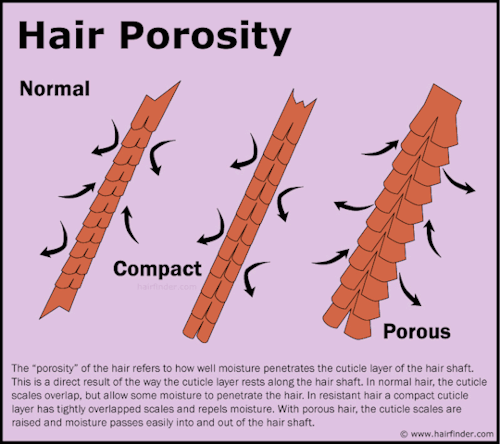
Porosity is your hair’s ability to absorb moisture and is broken down into three categories: low, normal and high. To figure out the porosity of your hair, simply pluck a strand of clean hair and drop it into a glass of water. If the hair falls immediately to the bottom, that means your hair is highly porous. If it lingers in the middle, it is normal and if it stays to the top for a while before it starts to fall, it has low porosity.
The goal is to achieve normal porosity. How do we do this? Well there’s this little thing known as pH. The pH of your hair is very integral in your hair health. It’s the starting point in directing you down the road to flawless curls/coils. I’m sure most of you know how pH works. It’s a scale from 0-14. 0-6.9 is acidic, 7 is neutral, 7.1-14 is basic. Your hair and scalp oil, sebum, has a pH balance of between 4.5 and 5.5. This natural hair acidity prevents fungi and bacteria in the hair and scalp, and keeps the cuticle closed and healthy. As you can see, the more alkaline your hair is, the more open the hair cuticle is which makes it more porous. This means you should look for products more acidic to help close cuticles so that your hair retains moisture and isn’t as prone to tangle. If your current or future products do not indicate the pH of the product, purchase some pH strips* and test the products to see how it’s affecting your hair. If the product falls anywhere between 4-7 on the pH scale, you should be good to go!
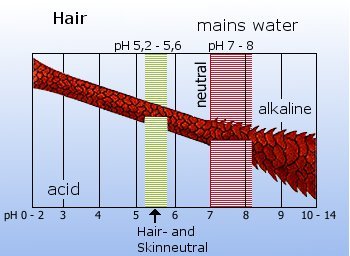
Hair density refers to how closely those strands are packed together on your head. The easiest way for someone to get a good idea of their hair density is to part a section of your hair and look at it from different angles. If you can easily see your scalp, it’s low density. If you can moderately see it, it’s medium density. If you can barely or not see your scalp at all, it is high density.
With knowing these integral things about your hair, it can help you improve your regimen tenfold thus stopping you from turning into a product junkie.
IxoraBB offers these hair products:
For all hair types: Aloe Vera & Rose Hydra Mist
For Dry Hair/Scalp: Cupuacu & Mango Hydrating Hair Souffle
Thick/High Density Hair: Macani Miracle Butter
Thin/Low Density Hair: Avomur Nourishing Butter
Styler/Light Hold: Loc & Twist Butter
Affiliate link*
12 Safe Cosmetic Ingredients That Only SOUND Toxic
Have you ever looked at the ingredients list of your favorite product and your eyes crossed trying to read the names of things? I know I sure have. And we often attribute most of those long drawn out names to be some kind of chemical thingamajig that scientists put together to keep our skin smooth or our hair flourishing.
The truth of it is that some of those names are really natural ingredients. Their scientific names are used for following protocol sake. The following are ingredients that are pretty common in skin care products so I want you to breathe a sigh of relief when you see them and know they are completely safe. I will give you the text book definition then break it down further so it’s it doesn’t look like Greek.
1. Hyaluronic Acid
A viscous fluid carbohydrate present in connective tissue, synovial fluid, and the humors of the eye.
What this means is, it’s a type of carbohydrate made up of simple sugars that binds to water and helps to lubricate eyes, joints, muscles, and yes, most importantly, your skin. Because of its lubrication capabilities, it’s often in anti-aging or and/or moisturizing products.
2. Caprylic/Capric Triglyceride
A mixed triester derived from coconut oil and glycerin. It comes in the form of an oily liquid, and is sometimes mistakenly referred to as fractionated coconut oil.
This ingredient is a combination of plant sugars and fatty acids derived from palm and coconut oils. It is liquid oil derived from Coconut Oil. It oil is comprised of short chain fatty acids, and is extremely stable with an almost indefinite shelf life. This can be used in place of fractionated coconut oil in products such as lotions, balms and massage oils. It is a light, penetrating oil, that doesn’t leave that greasy feeling.
3. Methylsulfonylmethane (MSM)
Methylsulfonylmethane is an organosulfur compound with the formula (CH₃)₂SO₂. It is also known by several other names including DMSO₂, methyl sulfone, and dimethyl sulfone.
MSM is a chemical in animals, many plants, soils, fruits, vegetables, fish, eggs, meats, and milk. It’s also found naturally in humans. People use it most often to try to treat arthritis because of its anti-inflammatory effect. It can be applied topically which penetrates deeply to help encourage hydration and makes it great for irritated or sensitive skin.
4. Cetearyl Alcohol
Cetostearyl alcohol, cetearyl alcohol or cetylstearyl alcohol is a mixture of fatty alcohols, consisting predominantly of cetyl and stearyl alcohols and is classified as a fatty alcohol.
Normally when you see alcohol, you think bad or drying, like benzyl alcohol but not this ingredient. Cetearyl alcohol is a combination of fatty alcohols derived from vegetable sources, such as coconut or palm oils. It is used in cosmetics as an emollient, emulsifier, thickener and carrying agent for other ingredients contained in a cosmetic solution. It keeps the oil and water parts of an emulsion from separating, and gives products good spreadability.
5. Xanthan Gum
A substance produced by bacterial fermentation or synthetically and used in foods as a gelling agent and thickener. It is a polysaccharide composed of glucose, mannose, and glucuronic acid.
I am positive you have seen this ingredient on food labels but never really knew what it did. It is simply a carbohydrate derived from plant bacteria. Manufacturers also use sugar from soy, wheat, dairy, or corn, and add a particular type of bacteria called Xanthomonas campetris. The result of this is sounds kind of gross but resulting slimy substance helps to thicken and emulsify skin care formulas.
6. Coco Glucoside
Coco Glucoside is an non-ionic surfactant that can be used as a foaming, cleansing, conditioning, and thickening agent to liquid cleansers and shampoos.
It is derived from renewable raw materials like dried coconut pulp and fruit sugar. It is a mild surfactant is commonly used in cosmetics and is gentle enough for all skin types, and is biodegradable and nontoxic.
7. Palmitoyl Oligopeptide
Palmitoyl oligopeptide is a peptide; peptides act as building blocks between amino acids. By forming a strong bond palmitoyl has been shown to increase collagen, glucosaminoglycan and elastin production.
They are like mini protein molecules also known to assist in the process of skin repair and renewal. Palmitoyl works because of its ability to bind to human skin. Some carry hormones to specific organs, some transmit sensory information throughout the body, and others help form collagen and elastin in the skin. Those compounds are the concrete structure that keeps your skin from sliding off your face.
8. Caprylyl Capryl Glucoside
Caprylyl Capryl Glucoside is a mild, solubilizing non-ionic surfactant that is obtained from renewable raw materials: fatty alcohols and glucose from vegetable origin.
This ingredient is made in a lab using raw ingredients like vegetables or coconut. It’s a way safer surfactant cleaner that is used to make the product foam up. It won’t harm your skin at all.
9. Sodium Hyaluronate
Sodium Hyaluronate
is the sodium salt of hyaluronic acid.
This chemical is hyaluronic acid’s cousin. Same benefits as HA, but is made of a smaller molecule which makes it easier to sink into the skin. It retains water very well and gives the skin that plumped up look that’s an identifier of hydration.
10. P-Anisic Acid aka “Draconic Acid”
P-Anisic acid, also known as 4-methoxybenzoic acid or draconic acid, is one of the isomers of anisic acid. The term “anisic acid” often refers to this form specifically.
P-Anisic acid is found naturally in anise which is a flowering plant native to the eastern Mediterranean region and Southwest Asia. This plant has antiseptic or germ-killing properties. It will is often used as a substitute in natural or organic skin care products instead of parabens which has been in the recent years given a bad name. (We will discuss that in another post.)
11. Glyceryl Stearate Citrate
Glyceryl Stearate Citrate is a fatty acid monoglyceride used in cosmetics as an emulsifier and stabilizing ingredient.
GSC is a combination of vegetable oils and citric acid. It is used in cosmetics as an emollient and fragrance ingredient and also helps skin and hair retain moisture.
12. Maltooligosyl Glucoside/Hydrogenated Starch Hydrolysate
Maltooligosyl Glucoside/Hydrogenated Starch Hydrolysate aka MG-60 from Hayashibara is a starch derived carbohydrate syrup, comprising various kinds of saccharides, which provides additional benefits to hair care, skin care and cleansing products.
MG-60 is a natural carbohydrate syrup that imparts a smooth texture and long-lasting foam to personal care products. It’s a glycerin alternative that helps protect the skin from irritation which makes it very beneficial for skin care products made for sensitive skin. It also provides a rich and luxurious lather hair care products.
If you can think of other chemical-y sounding ingredients that are derived from natural ingredients, feel free to add them in the notes!
9 Tips On How To Transition Your Skin Care Regimen Into the Fall/Winter Season
Fall is upon us and we must act accordingly! When the weather gets colder, it affects our skin differently than in the hotter months, therefore we must treat it differently. The following tips will help you smoothly transition your routine so that you can maintain your flawless skin.
1. Humidifier
When it’s cold outside, most of us have heaters running in our homes. The air from the heater tends to dry the room out which can dry out your skin. Humidifiers prevent that. You can nicely priced ones at your nearest drug store or Walmart.
2. Heavier Moisturizer
If you tend to just use lotions or oils during the summer months, that might not be enough in the winter. For oily/normal/combination skin, you might need to upgrade to a cream or a butter like the Palinoi Silk Body Custard (cream) or the Jumbo Combo Butter which are heavier that can combat outside elements. You can also find butters/creams that better serve your skin type here on our Skin Care for Dummies Guide.
3. Exfoliation
Oh you thought that was just a summer thing? No ma’am and no sir! Exfoliation in the winter is just as important as in the summer. Exfoliation gets rid of your dead skin cells and allows moisturizers to penetrate your skin deeper. It is always best to immediately moisturize after you exfoliate to retain as much moisture as possible. In the colder months, it is better to use exfoliants that moisturize as it exfoliates like the Kissed by the Sun Moisturizing Sugar Scrub, Hemp & Sea Salt Scrub or the Charcoal Detoxifying Salt Scrub.
4. Take Shorter Shorter and Cooler Showers
Yes, we women LOVE showering in hot water but in the colder months, that works against us. The hot water strips us of the natural oils in our skin and can cause our skin to be dehydrated when we go outside. So turn the heat down a notch and speed up your showering routine to protect your skin from losing excess moisture. Also, using soaps with goat milk or Shea butter in it like the Lavender Lemon Goat’s Milk Soap or the Oats Galore Soap are a great way to moisturize your skin while you cleanse.
5. Sunscreen
The sun doesn’t go on vacation in the winter. You still need to protect your skin from its rays whenever you’re outside. If you live in an area that snows, you DEFINITELY need to wear sunscreen because snow reflects 80% of the sun’s light. Try to use sunscreens with built in moisturizers like the Cara Hermosa Butter w/ SPF 30+ protection.
6. Hydrate & Proper Eating Habits.
Look at it this way, the same way you want to moisturize your outside, you should want to moisturize your insides too. Drinking lots of water and green tea which adds a boost of antioxidants gives your skin the best chance of looking its best during the winter months.
What you eat or don’t eat can affect your skin greatly. Load up on vegetables and healthy fats to keep your nutrients high.
7. Lip Care
Your lips are naturally moist, and because of that when exposed to harsh elements, they are way more susceptible to damage. Exfoliate your lips with the Luxe Lip Scrub and moisturize it with the Luxe Lip Balm to keep your lips healthy and happy.
8. Hand Care
Keep your hands “gloved up” in the cold weather to protect them from drying out. Chapped hands can lead to bigger issues like infections so to prevent that, moisturizing and gloves up until spring comes is a life saver.
9. Skin Repair
The winter months is a great time to repair sun damage from the summer months. And as you nourish your body from the inside, it helps to nourish your body on the outside too. A vitamin C serum is a great way to do that and is best to apply before applying your normal moisturizers.
How do you prepare your skin for the cold weather? Feel free to share any other tips you might have!
IxoraBB’s Skin Care Guide For Dummies
You guys have been asking me for this for a while. Well here it is. This guide will help navigate those with no skin care regimen and also help those who wish to change/improve what they already have. This guide will be adult and children friendly and will go based on your skin type for both face and body.
We will work from the top of your head down to your toes.
List of Hair Products:
Moisturizer: Macani Miracle Butter, Avomur Nourishing Butter
Styler w/ Light Hold: Loc & Twist Butter
Hair Care Regimen
Proper Steps for Hair Care Regimen: Cleanse hair, condition hair, moisturize hair while still damp. Depending on hair type(thick/high density), adding a water based product first would help keep the hair moisturized longer.
Thick/High Density Hair: Macani Miracle Butter
Thin/Low Density Hair: Avomur Nourishing Butter
Styler/Light Hold: Loc & Twist Butter
List of Facial Products:
Cleanser: Blissful Skin Oil Cleanser, Lavender & Rosemary Spa Bar, Lemongrass & Tea Tree Spa Bar, Debonair Hydrating Beard Soap
Toner: Lavender Rose Aftershave/Toner, Cucumber Mint Aftershave/Toner
Moisturizer: Cara Hermosa Butter (w/ or w/o SPF Protection), Cara Fresca Revitalizing Cream, Debonair Hydrating Beard Cream
Scrub: Mon Bijou Sugar Scrub, Walnut & Pumice Face Scrub
Face Mask: Detoxifying Charcoal Clay Mask
Skin Care Regimen for the Face
Proper steps for Facial Regimen: Cleanse (recommended to use Oil cleanser first before spa bar if using the double cleansing method. Best to use after wearing makeup), Face Mask (1-2 times/week same day you exfoliate), Exfoliate(1-2 times/week same day you use face mask), Moisturize
Dry Face: Blissful Skin Oil Cleanser and/or Lavender Rosemary Spa Bar, Lavender Rose Toner/Aftershave, Cara Hermosa Butter (w/ or w/o SPF Protection), Mon Bijou Sugar Scrub
Combination Face:
Blissful Skin Oil Cleanser and/or
Lavender Rosemary Spa Bar, Lavender Rose Toner/Aftershave or Cucumber Mint Toner/Aftershave, Cara Fresca Revitalizing Cream, Walnut & Pumice Face Scrub or Mon Bijou Sugar Scrub, Detoxifying Charcoal Clay Mask
Oily/Acne Prone Face: Lemongrass & Tea Tree Spa Bar, Cucumber Mint Toner/Aftershave, Cara Fresca Revitalizing Cream, Walnut Pumice Face Scrub, Detoxifying Charcoal Clay Mask
Sensitive Face: Use the regimen based on your skin type, but use the Mon Bijou Sugar Scrub because it is gentler on the skin.
Beard: Debonair Hydrating Beard Soap, Debonair Hydrating Beard Cream
List of Body Products:
Soaps: Oats Galore Soap, Detoxifying Charcoal & Clay Soap, Lavender Lemon Goat’s Milk Soap, Green Tea & Jasmine Soap, Detoxifying Hemp & Loofah Exfoliating Man Bar
Body Cream (water based): Palinoi Silk Body Custard, Oats Galore Body Cream
Body Oil: Ultra Bath/Body Oil
Body Butter (oil based): Ash Today, Gone Tomorrow Butter, Jumbo Combo Butter, Sweet, Soft & Sensitive Butter, Easy, Greasy, Eliminator Butter, Distinguished Gentleman Butter
Scrubs: Kissed By The Sun Moisturizing Sugar Scrub, Mon Bijou Sugar Scrub, Golden Rock Sugar Scrub, Hemp & Sea Salt Scrub, Charcoal Detoxifying Salt Scrub
Bath Soak: Oats Galore Bath Soak
Skin Care Regimen for Body
Proper Steps for Body Regimen: Cleanse, Exfoliate (3-5 times/week), Bath Soak, Moisturize (if you have dry skin, use a water based product then layer it with an oil based product to seal the moisture in)
Dry Skin: Lavender Lemon Goat’s Milk Soap or Detoxifying Hemp & Loofah Exfoliating Man Bar, Palinoi Silk Body Custard, Ash Today, Gone Tomorrow Butter or Distinguished Gentleman Butter, Kissed by the Sun Moisturizing Sugar Scrub or Hemp & Sea Salt Scrub or Charcoal Detoxifying Salt Scrub
Combination Skin: Lavender Lemon Goat’s Milk Soap or Detoxifying Charcoal & Clay Soap or Detoxifying Hemp & Loofah Exfoliating Man Bar, Jumbo Combo Butter, Mon Bijou Sugar Scrub
Sensitive Skin: Green Tea & Jasmine Soap or Detoxifying Hemp & Loofah Exfoliating Man Bar, Sweet, Soft & Sensitive Butter, Mon Bijou Sugar Scrub
Oily/Acne Prone Skin: Detoxifying Charcoal & Clay Soap or Detoxifying Hemp & Loofah Exfoliating Man Bar,Oats Galore Bath Soak, Golden Rock Sugar Scrub or Charcoal Detoxifying Salt Scrub, Ultra Bath/Body Oil, Easy, Greasy, Eliminator Butter
Eczema Prone Skin: Oats Galore Soap, Oats Galore Bath Soak, Oats Galore Body Cream, Ash Today, Gone Tomorrow Butter
